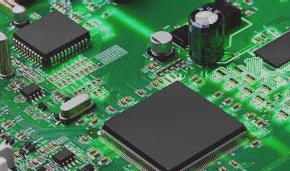Understanding Prepreg in PCBs
Prepreg is a crucial component in PCB manufacturing. It is untreated FR4 material that binds etched cores together and glues copper foil with the core. The thickness of prepreg can vary based on the board’s height. When comparing prepreg vs. core, prepreg is virgin FR4 that integrates into the PCB structure.
Prepreg PCB Preparation Process
- Reinforcing with thermoplastic or thermoset resins
- Removing excess resin
- Preparing for curing at high and low temperatures
Application in the PCB Manufacturing Process
Prepreg is commonly used to bond copper-plated laminate with copper foils in multi-layer rigid PCBs. It is also essential in flexible circuit and rigid-flex circuit board manufacturing.
Multi-Layered Boards

Prepreg is crucial for bonding copper-coated laminate with copper foil in multi-layered rigid PCBs.
Complex PCBs

Complex PCBs include Flex Circuit with Stiffener PCB and Rigid-flex board types. Prepreg is used to bond FPC with a stiffener in Flex Circuit with Stiffener PCBs and to bond CCL with copper foil and FPC with stiffener in Rigid-flex boards.
How is Prepreg Used?
The Significance of Prepreg in PCB Manufacturing
- Construction
- Defense and ballistic
- Marine
- Transportation
- Infrastructure
- Wind energy/power and other industries
Importance of Prepreg in PCB Fabrication
- Easy to apply and learn, reducing labor costs
- Less messy compared to wet layups, aiding in waste management
- Available in various types like Kevlar and fiberglass for different needs
- Potential to decrease device weight, crucial for specific equipment
PCB prepreg material has a longer shelf life when stored in colder temperatures, maintaining its usability over time.
Role of Prepreg in PCB Development
Prepreg acts as a reliable adhesive, binding PCB layers together and providing insulation within multi-layered boards.
Prepreg PCB contributes to weight reduction in components, enhancing device utility and minimizing transportation costs.
In Conclusion
Prepreg, short for pre-impregnated, serves as the foundation for PCB construction, reinforcing layers and ensuring proper insulation and weight management.


